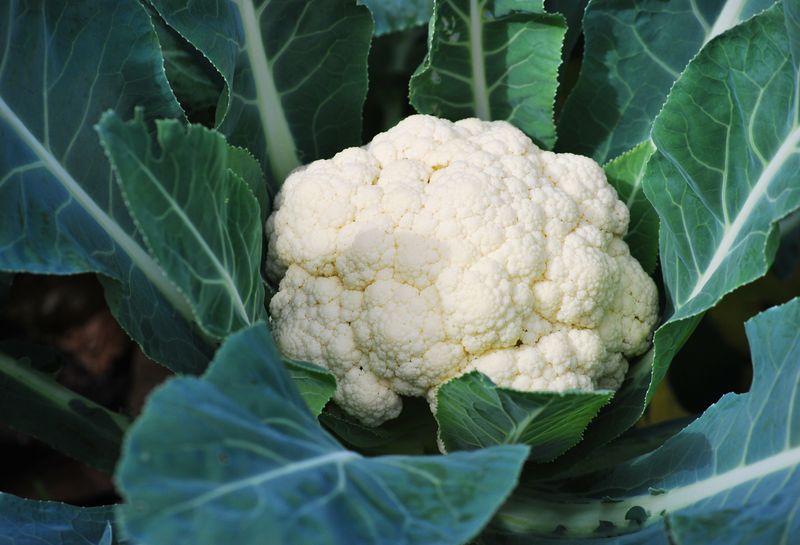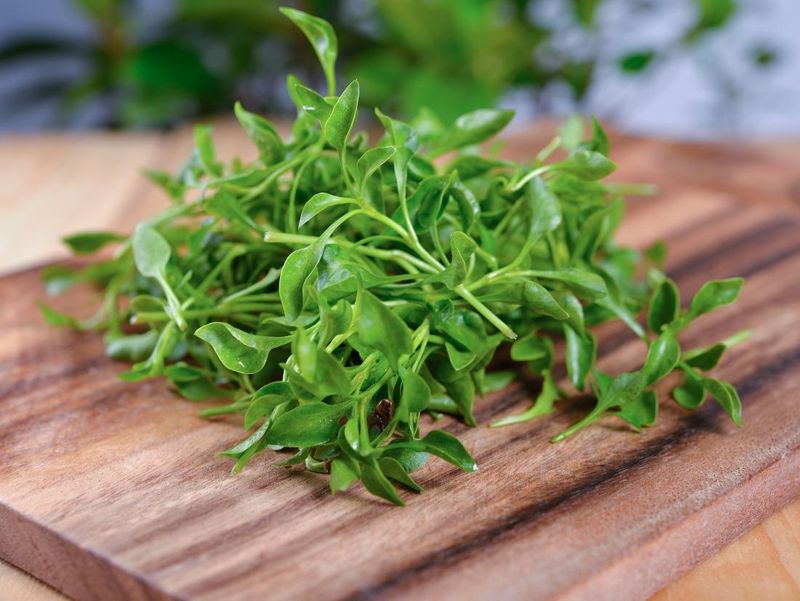Incorporating a variety of vegetables into your daily meals not only enhances flavor but also boosts nutritional value. From leafy greens to root vegetables, each offers unique health benefits. This blog will explore twelve must-have vegetables that deserve a spot on your plate every day.
Whether you’re aiming for better heart health, glowing skin, or a stronger immune system, these vegetables can play a key role. Let’s discover how each of these vibrant options can contribute to your wellness journey and how to creatively include them in your diet.
1. Brussels Sprouts

Imagine tiny cabbages, but with a flavor all their own; that’s Brussels sprouts for you. These little green orbs pack a punch of nutrients, including vitamin K and C. Often roasted to crispy perfection, they provide a satisfying crunch and a slightly nutty taste.
When you’re looking to add some green to your plate, Brussels sprouts are a fantastic choice. They’re known to reduce inflammation and improve heart health. Whether you’re a fan or a skeptic, try them caramelized with balsamic glaze; you might just be surprised by how deliciously satisfying they can be.
2. Kale

Often hailed as a superfood, kale is a leafy green worth praising. Loaded with antioxidants, it’s a powerhouse of vitamins A, C, and K. Toss it into a salad or blend it into a smoothie for a nutritious boost.
Kale’s versatility is one of its best features. Whether you prefer it raw, sautéed, or baked into chips, there’s no shortage of ways to enjoy it. Not only does it support detoxification, but it also aids in lowering cholesterol levels. Explore new recipes and find your favorite way to incorporate kale into your meals.
3. Spinach

Think Popeye, and you’ll understand why spinach is crucial in a balanced diet. Rich in iron and calcium, this leafy green contributes to bone health and energy levels. Enjoy it fresh in salads or gently wilted in your dishes.
Spinach is more than just a salad ingredient. Its mild flavor makes it perfect for smoothies, soups, and even pasta dishes. Known for its ability to boost eye health, spinach is a versatile green that fits seamlessly into any meal plan. Discover the endless possibilities with this nutrient-packed vegetable.
4. Beets

With their earthy flavor and vibrant color, beets brighten up any dish. They’re known for improving blood pressure and enhancing athletic performance due to their high nitrate content. Try them roasted or in a refreshing salad.
Beets offer more than just a splash of color. Their unique taste pairs well with a variety of ingredients, making them a versatile addition to your kitchen. Whether you’re juicing or roasting them, beets bring an undeniable earthy sweetness to your meals. Explore their potential in your culinary adventures.
5. Sweet Potatoes

Sweet potatoes are not only a holiday staple but also a nutritional powerhouse. Packed with beta carotene, they promote healthy vision and immune function. These tubers are delicious when baked, mashed, or made into fries.
Their natural sweetness makes them a favorite among kids and adults alike. Versatile enough for both sweet and savory dishes, sweet potatoes are a must-have in any kitchen. Try them in sweet potato pie or simply roasted with herbs for a flavorful treat. Their benefits extend beyond taste, supporting overall health.
6. Broccoli

Broccoli is often dubbed the king of cruciferous vegetables. Rich in fiber and vitamins C and K, it’s a staple for those seeking heart and bone health. Enjoy it steamed, roasted, or even raw as a snack.
Aside from its health benefits, broccoli’s versatility in the kitchen is unrivaled. From stir-fries to casseroles, it adds a delightful crunch and bright green color to your dishes. If you’re looking to boost your diet with a nutritious green, broccoli should definitely make the list. Dive into its myriad of uses today.
7. Bell Peppers

Few vegetables offer such a vibrant palette as bell peppers. Available in red, yellow, and green, they’re loaded with vitamin C and antioxidants. Whether grilled, roasted, or raw, they add a sweet crunch to any dish.
The versatility of bell peppers is unmatched. Perfect for salads, stir-fries, or as a stuffed entrée, they complement a wide array of flavors. Not only do they enhance visual appeal, but they also provide a subtle sweetness that balances savory dishes. Elevate your culinary creations with these colorful beauties.
8. Cauliflower

Cauliflower might not be the most colorful vegetable, but its nutritional profile is impressive. High in fiber and vitamin C, it’s known for supporting digestion and weight loss. Enjoy it roasted or as a low-carb substitute in various recipes.
This cruciferous vegetable is making waves as a versatile kitchen staple. From cauliflower rice to pizza crusts, its adaptability is truly remarkable. Not just a side dish, it can be the star of your meal. Discover the many ways to incorporate cauliflower into your diet and enjoy its health benefits.
9. Carrots

Carrots are more than just a snack for rabbits; they’re a powerhouse of nutrition. Rich in beta carotene, they support eye health and boost the immune system. Enjoy them raw, roasted, or even in a hearty stew.
Their natural sweetness makes them a favorite in both sweet and savory dishes. Carrots are incredibly versatile and can be used in everything from salads to cakes. They add a lovely color and crunch to your meals. Incorporate carrots into your diet for a nutritious and delicious boost.
10. Zucchini

A summer squash, zucchini is a versatile addition to any meal. Low in calories but high in nutrients, it supports heart health and enhances digestion. Sauté it, grill it, or spiralize it for a healthy pasta alternative.
This mild-flavored vegetable complements a variety of dishes, making it a staple in many cuisines. Whether you’re baking zucchini bread or adding it to soups and stews, it provides a subtle yet satisfying texture. Embrace the myriad ways zucchini can enrich your meals and contribute to a balanced diet.
11. Asparagus

Cherished for its delicate flavor and tender texture, asparagus is a springtime favorite. High in folate and vitamins A, C, and K, it supports healthy digestion and cardiovascular health. Grill, roast, or steam it for the best flavor.
Known for its elegant appearance, asparagus is often reserved for special occasions. However, it’s easy to incorporate into everyday meals. Whether you serve it as a side dish or incorporate it into salads, its subtle flavor enhances any dish. Explore the delightful taste of asparagus today.
12. Cabbage

Cabbage is a leafy green that deserves a spot on your plate. Rich in vitamins K and C, it supports bone health and boosts the immune system. Enjoy it raw in coleslaw or fermented as sauerkraut for a probiotic boost.
With its mild flavor and crunchy texture, cabbage is a versatile addition to many dishes. Stir-fry it, add it to soups, or use it as a wrap. Its adaptability and health benefits make it a valuable component of any diet. Discover new recipes and enjoy the wellness perks of cabbage.
13. Kohlrabi

Although kohlrabi might seem like an exotic choice, it’s not always the healthiest option. This bulbous vegetable is known for its high sugar content, which can contribute to spikes in blood sugar levels. For individuals managing diabetes, consuming kohlrabi regularly could pose challenges.
In addition, kohlrabi’s tough texture can be hard on the digestive system. If you’re prone to stomach issues, you might want to steer clear of this vegetable. While it can be enjoyed occasionally, eating it every day may not be the best idea for everyone.
14. Eggplant

Although rich in fiber, eggplants contain a moderate amount of solanine. This naturally occurring chemical can cause irritation in some people, leading to digestive discomfort. If you have a sensitive stomach, it’s wise to be cautious with this vegetable.
Moreover, eggplants can also be high in histamines, which may trigger allergic reactions in susceptible individuals. Those with allergies should approach eggplant consumption with care. Adding it to your meals occasionally is fine, but daily inclusion might not be advisable.
15. Turnips

Turnips are often overlooked, yet they have their own set of drawbacks. They are known to interfere with the absorption of iodine, potentially impacting thyroid function. Individuals with thyroid concerns should be particularly wary of regular turnip consumption.
Additionally, turnips can contribute to gas and bloating. Those who experience these digestive issues might find that reducing turnips in their diet is beneficial. While they can be enjoyed sporadically, making them a daily staple is not ideal.
16. Iceberg Lettuce

Iceberg lettuce is a popular choice for salads, but it offers minimal nutritional value. It’s mostly water, lacking significant vitamins and minerals, which can leave your body wanting more substantial nutrients.
Moreover, relying heavily on iceberg lettuce can mean missing out on more nutrient-dense greens. Those seeking to maximize their vitamin intake might consider other leafy alternatives. Enjoying it every now and then is acceptable, but it shouldn’t dominate your diet.
17. Watercress

Though packed with nutrients, watercress contains oxalates, which can contribute to kidney stone formation in susceptible individuals. For those prone to kidney issues, limiting watercress could be a wise decision.
Further, its peppery taste might not appeal to everyone, making it challenging to incorporate into everyday meals. While it offers health benefits, ensuring it doesn’t overwhelm your diet is important. Enjoying it in moderation is key.
18. Corn

Corn is a staple in many diets, yet it poses certain challenges. High in starch, corn can lead to weight gain if consumed in large quantities. Individuals watching their weight might find it beneficial to reduce corn intake.
Additionally, corn can be difficult to digest, potentially causing bloating and gas. Those with sensitive digestive systems should be mindful of how much corn they consume. While it’s fine in moderation, relying on it daily may not be optimal.
19. Rutabaga

Rutabagas, though similar to turnips, contain complex carbohydrates that some individuals find hard to digest. Those with digestive sensitivities might experience discomfort when consuming rutabaga regularly.
Moreover, rutabagas can be high in sugar, which can affect blood sugar levels. People with diabetes or pre-diabetes should be cautious about including rutabaga in their daily diet. Consuming it occasionally is acceptable, but moderation is advised.
20. Potatoes

Despite their popularity, potatoes are a high-glycemic food, which can lead to rapid increases in blood sugar levels. Individuals managing diabetes or blood sugar issues should be wary of regular potato consumption.
Furthermore, potatoes can be calorie-dense, particularly when fried or buttered, contributing to weight gain. To maintain a balanced diet, it’s wise to consider other vegetable options. While potatoes can be a delightful part of meals, they shouldn’t be a daily choice.
21. Okra

Known for its slimy texture, okra isn’t everyone’s favorite. Its mucilaginous nature can be off-putting to some, making it hard to include in everyday dishes.
Additionally, like other nightshades, okra contains solanine, which can cause discomfort in certain people. Those sensitive to nightshades should monitor their okra consumption. While it can be beneficial in moderation, relying on it daily isn’t recommended.
22. Mushrooms

Mushrooms, though versatile, can be a problem for those with allergies or sensitivities. Some individuals might experience adverse reactions to certain fungi, causing digestive distress.
Moreover, wild mushrooms pose a risk of toxicity if improperly identified. Individuals should be cautious about foraging and consuming wild varieties. Incorporating mushrooms into meals occasionally is fine, but daily consumption may pose risks.
Leave a comment